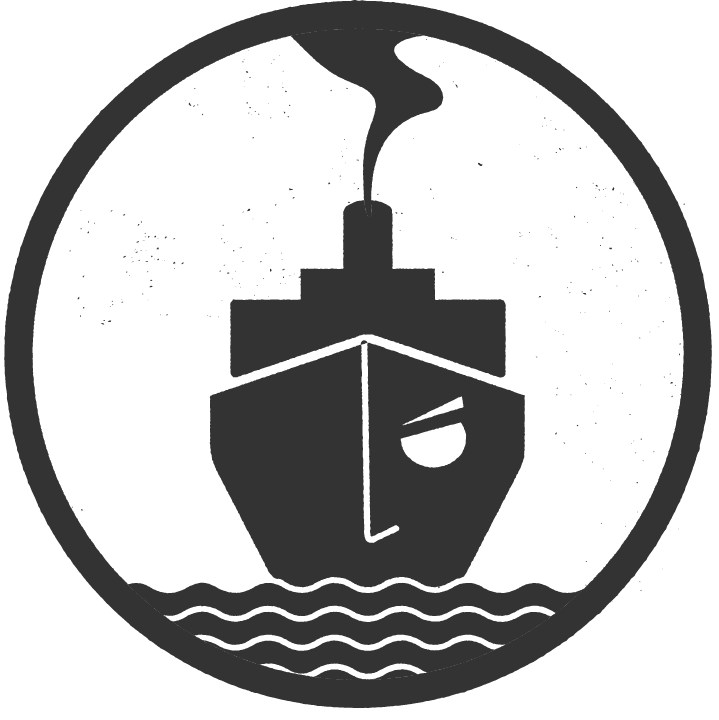advantages and disadvantages of staining cells24 Apr advantages and disadvantages of staining cells
The microscopic observation is that it helps in identifying the cell through the color change. of protoplasm cannot be studied. These potential IHC development obstacles can take time to overcome, but when the IHC assay is complete, the various chromogens can be visualised simultaneously, using standard light microscopy, and can be viewed repeatedly without altering staining results. . The advantage of using dyes to observe cells is that the dyes reveal these details and more. What are the advantages of using stains in studying microbiology? - Smear might be too thick and hold dye creating a false positive/ old cultures can create a false negative/ decolorization can cause false negative In a simple stain, a bacterial smear is stained with a solution of a single dye that stains all cells the same color without differentiation of cell types or structures. Why Stain Cells? In most cases, Gram stains are performed on biopsy or bodily fluids when infection is suspected, and they yield results much more quickly than other methods, such as culturing. The cookie is used to store the user consent for the cookies in the category "Performance". Multiple stains can be simultaneously used on a tissue, such that different cell types appear in different colors. When a direct stain is used, it can be either simple or differential. Knowing the chemical make up makes it easier to manipulate the bacteria for various purposes. This advantage applies to both compound and stereo microscopes. Some stains can penetrate cell walls and highlight cell components, and this can help scientists visualize metabolic processes. Create your account. Simple staining helps to examine or elucidate the bacterial shape, size and arrangement. Tissues often contain multiple compartments right next to each other. What are the advantages of staining specimens? Though there are no known risks of performing a Gram stain with some samples such as urine or mucus, one that uses tissue samples will carry a few risks related to the removal of tissue, such as infection or excess bleeding. A disadvantage of staining a specimen is that the staining can kill the living specimen fairly quickly and can be quite expensive. However, it is potentially compromised by proliferative responses that . Introduction: Gram staining is a method commonly used to determine the chemical make up of the cell wall of bacteria. Also, what are the limitations of simple staining? Disadvantages: (1) It causes marked shrinkage of cells (this may be counteracted by addition of acid) (2) It rapidly hardens the outer layer of the tissue with incomplete fixation of the center, therefore, thinsections should be made. The Active Caspase 3 antibody was conjugated to HRP complex using an Abcam HRP Conjugation Kit (ab102890), diluted to approximately 3g/mL, applied to tissues for 15 minutes, and detected with Abcam Steady DAB/Plus (ab103723) for 5 minutes. A: You can see the entire cell and organelles. Gram staining highlights different bacteria types through the use of special dyes. What are the advantages/disadvantages of staining and heat fixing? 10. This slice of tissue is attached to a thin glass slide. While it is used primarily for making a preliminary morphologic identification or for establishing whether there is a substantial number of bacteria in clinical specimens, this method will not be able to identify bacteria to the species level. It is a very sensitive and particular technique. Advantages and disadvantages of TUNEL staining methods. What are the benefits of using wood stain? The cell has different parts, and those that can absorb stains or dyes are referred to as chromatic. Some stains can penetrate cell walls and highlight cell components, and this can help scientists visualize metabolic processes. Bond Wash Buffer, equivalent to Tris Buffered Saline, was used as standard IHC wash buffer. It stain basic structures in red or pink color. Bacteria cause spoiling of food so that it does not keep as long as we may desire. The disadvantages of histology and histological staining include: Preparation of the slides using the paraffin technique can be time-consuming; frozen slides are faster to prepare, but this can affect the resolution, especially when using light microscopy. Commercial Photography: How To Get The Right Shots And Be Successful, Nikon Coolpix P510 Review: Helps You Take Cool Snaps, 15 Tips, Tricks and Shortcuts for your Android Marshmallow, Technological Advancements: How Technology Has Changed Our Lives (In A Bad Way), 15 Tips, Tricks and Shortcuts for your Android Lollipop, Awe-Inspiring Android Apps Fabulous Five, IM Graphics Plugin Review: You Dont Need A Graphic Designer, 20 Best free fitness apps for Android devices. These cookies track visitors across websites and collect information to provide customized ads. What are the advantages of staining? This is the most frequently used combination for general staining of skin samples and is especially useful in the diagnosis and classification of cancer. In most cases, Gram stains are performed on biopsy or bodily fluids when infection is suspected, and they yield results much more quickly than other methods, such as culturing. However, you may visit "Cookie Settings" to provide a controlled consent. 2. Provide one example of a harmful species and one example of a harmless species for each of the three common bacterial cell shapes. Advantages of Masson's Trichrome Staining. You also have the option to opt-out of these cookies. Two different IHC detection systems (Horseradish Peroxidase and Alkaline Phosphatase) were used to detect the two selected markers, in order to avoid reagent cross-reactions. Bond Wash Buffer, equivalent to Tris Buffered Saline, was used as standard IHC wash buffer. Copy. Advantages include flexibility in downstream processing of DNA and/or RNA and compatibility with intact cells and nuclei from fresh and frozen tissue. A simple stain is a stain that re As a result, the cell will not deform by the heat. To be able to perform a Gram stain test, there is a need to have a sample of body tissue or fluid, and the collection methods would vary depending on the types of the sample. Q: I. Unwinding of DNA and formation of replication fork II. Chemical stains, or chemical stains used in combination with antibodies, tracking proteins that bind to only one type of protein, are applied to thinly sliced tissue. Christmas tree stain gave significantly higher results (8.3) than hematoxylin-eosin (4.6 with t 2.33; p 0.023) and alkaline fuchsin (4.2 with t 2.47; p 0.017) (Fig. Cell staining is a technique used in cell biology to enhance the contrast of cells and structures within cells. This cookie is set by GDPR Cookie Consent plugin. It is basically a key procedure in identifying bacteria. Describe the acid-fast staining technique. Leica Bond Max Automated Stainer Procedures: All staining procedures were performed on the Bond Max automated stainer in order to generate the most standardised and reproducible results possible. The cell has different parts, and those that can absorb stains or dyes are called chromatic. One of the most . The heat also enhances the adherence of bacterial cells to the slide. Since the peptidoglycan layer is much thinner, the crystal violet staining is washed out when the cells are exposed to ethanol. Disadvantages: 1. Progressive stains make cells darker the longer the cells are exposed. Can cause shrinkage of cells at higher concentrations. But opting out of some of these cookies may affect your browsing experience. The cell wall can stain either positive or negative, depending on its chemistry. 6 Why do we prefer stains with positively charged chromogen? This site uses Akismet to reduce spam. You also have the option to opt-out of these cookies. The advantages of the negative stain include the use of only one stain and the absence of heat fixation of the sample. Advertisement cookies are used to provide visitors with relevant ads and marketing campaigns. The authors are: Shenna L Washington, Pamela Y Johnson, Mary D Beauchamp, Priya Handa Histology & Imaging Core Laboratory, Benaroya Research Institute, Seattle, WA & Abcam; Augustine Mzumara, product manager, Abcam. What Are The Advantages And Disadvantages Of Staining Cells Before Leishman stain - principle, procedure, results, advantages & disadvantages. They are then stained by the pink counterstain, commonly safranin or fuchsine. They are target specific, so they are less likely to harm beneficial organisms. What are some examples of how providers can receive incentives? Multicolour IHC allows researchers to visually identify specific cell types/populations or determine cell derivation, and also identify specific processes happening within those cells, in well-preserved, whole tissue specimens of various states. For medical conditions in most situations, it is not recommended as the sole method to use for bacterial identification. Eosin is a ynthetic acidic dye. List of Advantages of Gram Staining. Two advantages are that. Advantages and Disadvantages of Cervical Cytology Screening Education Guide Special Stains and H & E Second Edition - Agilent, Staining | CDC - DPDx - Diagnostic Procedures - Stool Specimens, examen ingles tercer grado telesecundaria primer bimestre, ielts liz latest speaking topics with answers, discrete mathematics logic questions and answers, trivia questions and answers about biology, rabbit population by season answer key pdf. Consequences of over-staining are that the cell wall may be broken up or completely destroyed which would result in a loss of morphological characteristics of the bacterial cell. Therefore, there are 8 less cervical-cancer-related deaths in the 1,000 . Who wrote the music and lyrics for Kinky Boots? Tends to polymerize at alkaline pH (above 7.5). Simple staining is a very simple method to perform, which stains the organism by using a single reagent. The intensity of these stains - that is, the darkness or lightness of the color - can be varied according to the researchers preference. yes there are disadvantages and advantages of having specialized Differential staining allows one to differentiate G+ from G- cells, whereas simple staining only shows cell size and morphology. Some stains specifically target molecules that are highly abundant in specific types of tissue, such as neurons and cartilage. However, based on the advantages and disadvantages listed above, do you think this method is best to use instead of some other alternative techniques to attain similar results? List of Advantages of Gram Staining. It is noted that Gram staining has a few side effects that can occur depending on the method used for obtaining samples and the type of samples. Each stain is useful in its own way for understanding the structure and function of tissues. Heat-induced epitope retrieval was performed on the tissues at approximately 100C using Bond Epitope Retrieval Buffers, equivalent to Citrate Buffer (~pH 6) and EDTA Buffer (~pH 8), for 10-20 minutes prior to incubation with IHC primary antibodies. What are the advantages/disadvantages of staining and heat fixing? This cookie is set by GDPR Cookie Consent plugin. This stability also allows standard histological stains to be used in conjunction with the . It is a rapid method that reduces the performance time by taking only 3-5 minutes. The most basic reason that cells are stained is to enhance visualization of the cell or certain cellular components under a microscope. Abcams new chromogens were comparable to those we currently use in terms of preparation and staining results, however, the Steady DAB/Plus reagent has a significantly longer period of stability compared with our other individual chromogens and allowed for simplified set-up when used on our standard automated staining system. We use cookies to ensure that we give you the best experience on our website. [FREE] What Are The Advantages And Disadvantages Of Staining Cells For Examination | latest! What are the disadvantages of staining cells? Negative staining employs the use of an acidic stain and, due to repulsion between the negative charges of the stain and the bacterial surface, the dye will not penetrate the cell. 2 What is the advantage of staining a cell? Allows for the Wood's Colour, Grain & Texture to Remain Visible. All tests were performed on 5m thick sections of selected FFPE (immersion fixed in 10% neutral buffered formalin) human tissues (liver, spleen, tonsil). Hence, it is a differential stain. Necessary cookies are absolutely essential for the website to function properly. The advantage of using stains to look at cells is that stains reveal these details and more. The main reason you stain a sample before putting it under the microscope is to examine it better, but staining does more than just highlight cell outlines. Disadvantages: Cell counting is generally done using a hemacytometer . Bond Peroxidase Block was used to inactivate endogenous peroxidases in all tissues. Haemotoxylin stains certain parts of the cell - like the nucleus - blue; Eosin stains other parts of the cell - such as the cytoplasm - red or pink. . Wiki User . What is thought to influence the overproduction and pruning of synapses in the brain quizlet? See full answer below. It also kills them, making it safe to handle pathogenic bacteria. The cookies is used to store the user consent for the cookies in the category "Necessary". Why do we prefer stains with positively charged chromogen? Disadvantages of staining cells? The fluorescent dye allows visualization of . It allows for various methods of testing. What are the advantages and disadvantages of staining wood? What is the benefit of negative staining? Aniline blue is used to stain collagen along which 1% acetic acid is added to differentiate between tissue sections. There are now many tools available to easily resolve some of the significant assay development obstacles of multicolour enzymatic immunohistochemistry. The disadvantages of histology and histological staining include: Preparation of the slides using the paraffin technique can be time-consuming; frozen slides are faster to prepare, but this can affect the resolution, especially when using light microscopy The method is subject to human error during the preparation and analysis of slides. The . Certain proteins may indicate that the tissue is healthy; others that it is diseased. . Bacteria are single-celled, tiny creatures that may enter healthy tissues and grow rapidly. This cookie is set by GDPR Cookie Consent plugin. Infections caused by bacteria should not be ignored even the symptoms are just mild, and one of the most commonly used methods to do this and find some treatments to address severity and spread is Gram staining. The cookie is used to store the user consent for the cookies in the category "Other. Mucin stains It gives quick results when examining infections. It gives quick results when examining infections. Of 1,000 women who do not get screened, 10 could die from cervical cancer. The differences between these groups of bacteria are considered to be important in determining appropriate treatments for infections. The disadvantages of histology and histological staining include: Preparation of the slides using the paraffin technique can be time-consuming; frozen slides are faster to prepare, but this can affect the resolution, especially when using light microscopy. Place a small drop of a Negative Stain on one end of your slide. You could also do viability stains which is typically an oxymoron because when you stain it, you kill the organism. Only Lasts a Few Years. As mentioned above, this method is a very important step in the preliminary characterization and classification of bacteria, and it is a key procedure in identifying bacteria based upon staining characteristics, which enables the bacteria to be examined with the use of a light microscope. What are the disadvantages of staining cells? This is why any person who is suspected to have bacterial infection or actually is having one is a candidate for a Gram staining test. What Are the Disadvantages of Stem Cell Research? The cookie is set by the GDPR Cookie Consent plugin and is used to store whether or not user has consented to the use of cookies. advantages: prevents cells from washing away, preserves cells, kills microbes, distinguish cells disadvantages: inability to determine motility, distortion of cell size/shape Thus red cells stain pink, the leucocyte cytoplasm is light pink, the nuclei are purplish black and the granules of the different leucocytes If you really want to have control over staining, you need to understand the differences and how to identify and choose each type. Haemotoxylin stains certain parts of the cell - like the nucleus - blue; Eosin stains other parts of the cell - such as the cytoplasm - red or pink. What are the advantages and disadvantages of ripening by natural and chemical oxidation. The cookie is set by GDPR cookie consent to record the user consent for the cookies in the category "Functional". Stains also have other uses, such as to distinguish organisms amongst each other. - Answers, Question: What Are The Advantages Of Staining Cells. In most cases, Gram stains are performed on biopsy or bodily fluids when infection is suspected, and they yield results much more quickly than other methods, such as culturing. Hence it is. What are the advantages of using a negative stain? Gram staining, which is also referred to as the Grams method, is a scientific technique of staining that is used to differentiate the species of bacteria into 2 main groups, namely the gram-positive and the gram-negative bacteria. Chemical stains can do more than visualize cells in different colors; the darkness or lightness of the color can be altered as well. This cookie is set by GDPR Cookie Consent plugin. Moreover, Gram staining is also an important step in the screening of infectious agents that are found in clinical specimens, such as a patients direct smear. Has no staining action. some to be examined by human and veterinary pathologists examining. The disadvantages of staining the cells is that the cells gets killed. Immunofluorescence (IF) has become a preferred method of concurrently detecting multiple antigenic markers within a single tissue specimen. The disadvantages of staining the cells is that the cells gets killed. Considerable testing was performed to attain the optimal intensity of each chromogenic stain in order to achieve an acceptable visual combination). advantages and disadvantages of staining cells . The purpose of staining is to increase the contrast between the organisms and the background so that they are more readily seen in the light microscope. To receive our free weekly NewsBrief please enter your email address below: Leica Bond Max Automated Stainer Procedures: All staining procedures were performed on the Bond Max automated stainer in order to generate the most standardised and reproducible results possible. The most basic reason that cells are stained is to enhance visualization of the cell or certain cellular components under a microscope. Visualizing more than one protein at once gives the researcher . In laboratories for clinical microbiology, this method is used in combination with other molecular and traditional techniques in identifying bacteria. (8) It is recommended for renal tissues, fibrin, connective tissues and muscles. It aids in the diagnosis of a specific organism and tells the difference between gram negative and gram positive bacteria. In most cases, Gram stains are performed on biopsy or bodily fluids when infection is suspected, and they yield results much more quickly than other methods, such as culturing. This stability also allows standard histological stains to be used in conjunction with the immunohistochemistry (IHC) to give researchers an additional layer of information. It stains the bacterial cell uniformly and thus increases the visibility of an organism. This is the most frequently used combination for general staining of skin samples and is especially useful in the diagnosis and classification of cancer. With these advantages in mind, consumers should take time to consider if staining is the better choice after finishing any outdoor wood project. advantages: prevents cells from washing away, preserves cells, kills microbes, distinguish cells. The most basic reason that cells are stained is to enhance visualization of the cell or certain cellular components under a microscope. Another very important advantage of electron microscopes is its unparalleled and unprecedented resolving power. . The arrangement of cells within a tissue reveals the health of that tissue. [FREE] What Are The Advantages And Disadvantages Of Staining Cells Before Examination [GET] What Are The Advantages And Disadvantages Of Staining Cells Before Examination | latest! Because cells can't be viewed with the unaided eye, microscopy is a key component to studying cell structure and function. This general stain is observed as the simplest, least expensive and most useful among the quick methods that used extensively in microbiology for the preliminary differentiation, identification and classification of microbiological organisms. This website uses cookies to improve your experience while you navigate through the website. The cookies is used to store the user consent for the cookies in the category "Necessary". It's sometimes called a peripheral smear for morphology. Some bacteria may cause infections of plants, threatening our food supply or ornamental plant. 3 What are the advantages of staining cells for examination? This would result to over-decolorization from the loss of the complex and, eventually, misinterpretation. Introduction: Gram staining is a method commonly used to determine the chemical make up of the cell wall of bacteria. It is simple and cost-effective. It stain basic structures in red or pink color. There are some of the advantages of using simple staining techniques, which are as follows: It is a simple method where one stain or reagent is. How do you make a negative stain? The procedure is performed to produce precluding information regarding the type of organisms that are directly present from the clinical specimens or from the growth on culture plates. This website uses cookies to improve your experience while you navigate through the website. The arrangement of cells within a tissue reveals the health of that tissue. A disadvantage of staining a specimen is that the stain can kill off the live specimen fairly quickly and can be rather expensive. In addition, the stain allows scientists to count the number of cells of a specific type in a specific biomass.if(typeof ez_ad_units!='undefined'){ez_ad_units.push([[300,250],'readersfact_com-large-mobile-banner-1','ezslot_6',185,'0','0'])};__ez_fad_position('div-gpt-ad-readersfact_com-large-mobile-banner-1-0'); Disadvantages.



